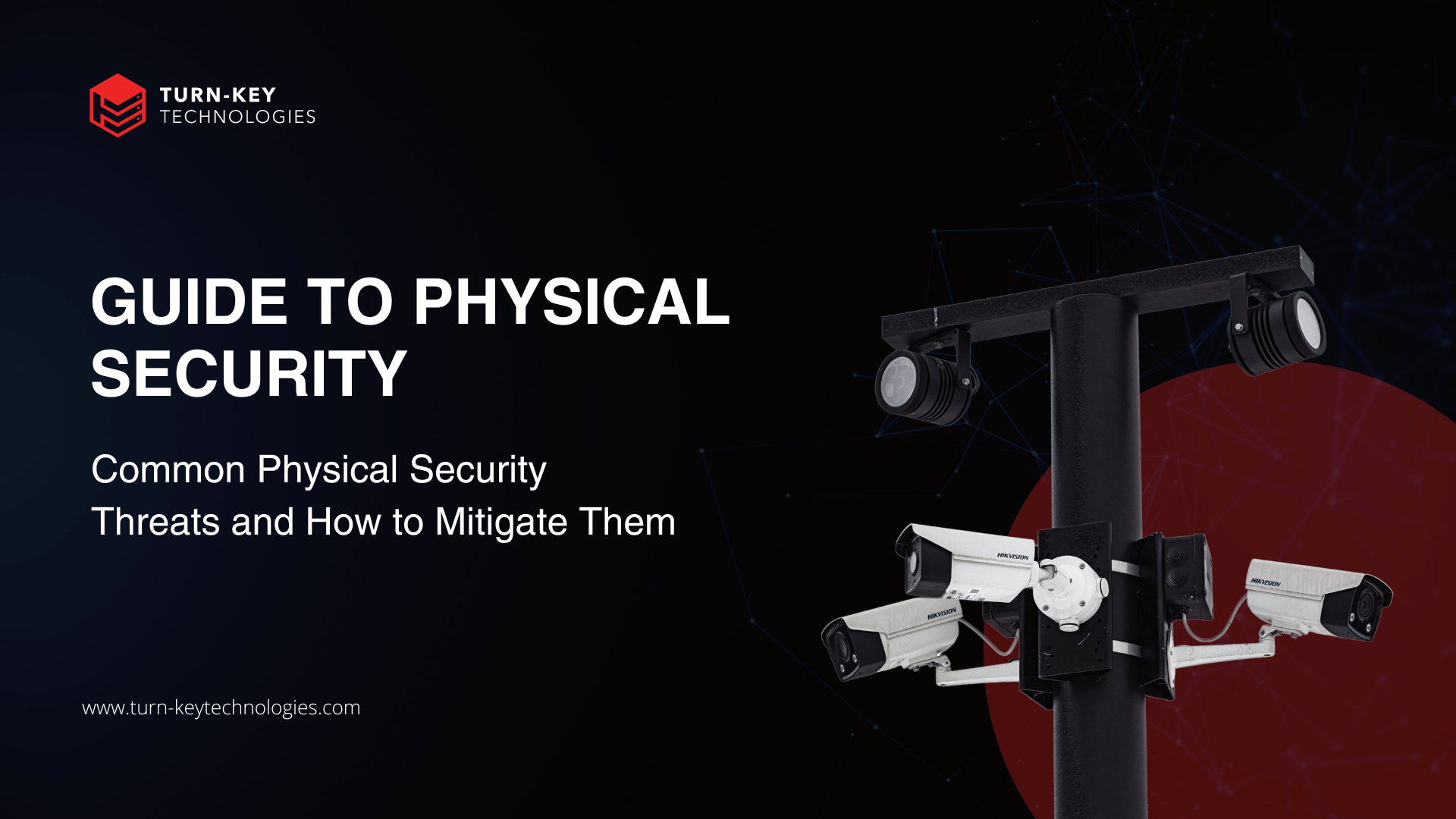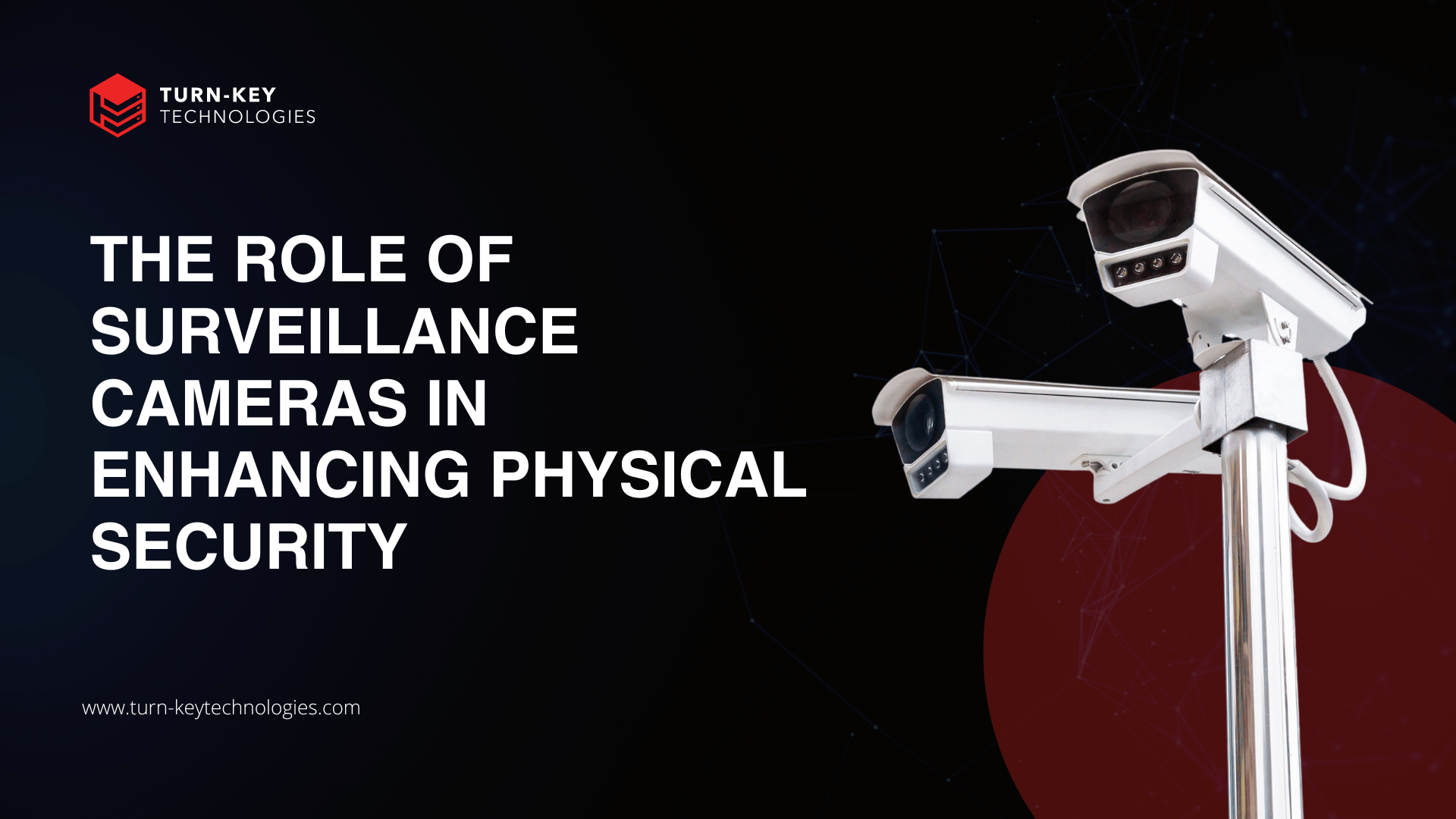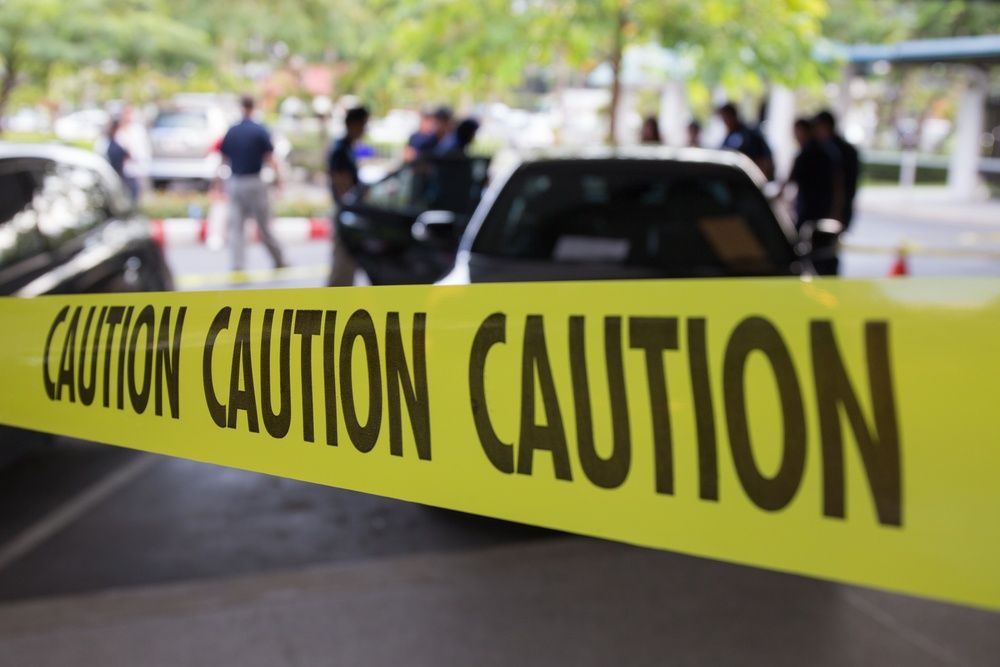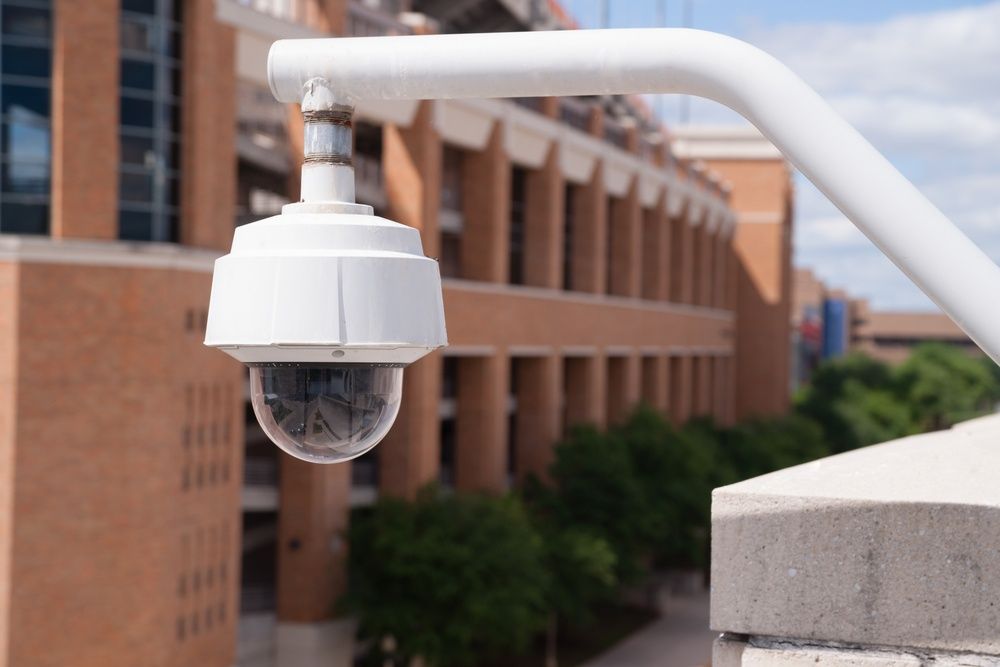The Role of Surveillance Cameras in Enhancing Physical Security
The physical security market is experiencing significant growth, with projections indicating it will expand at a CAGR of 8.03% from 2023 to 2028,...
12 min read
Turn-key Technologies Staff : Jul 8, 2024 12:07:00 PM

Physical security is essential for safeguarding people, property, and information from threats like unauthorized access, theft, vandalism, and natural disasters. In this blog post, we'll explore the key components of physical security and why they matter. A comprehensive physical security plan not only deters intruders but also ensures regulatory compliance and protects valuable assets.
TL;DR: Physical security is essential for protecting against threats like unauthorized access, theft, vandalism, and natural disasters. It involves using physical barriers, surveillance systems, access control mechanisms, and security personnel to deter intruders, ensure regulatory compliance, and safeguard assets. This blog post outlines the key components of physical security and their importance.
Physical security is crucial for protecting people, property, and information from physical threats like unauthorized access, theft, vandalism, and natural disasters. A robust physical security plan deters intruders, ensures regulatory compliance, and safeguards assets. This post outlines the key components of physical security and their importance.
Physical barriers are the first line of defense. Fences, gates, walls, and bollards prevent unauthorized access by establishing clear boundaries and controlled entry points. Enhancements like barbed wire and anti-climb paint further reduce breach risks.
Surveillance systems are another critical element. Security cameras and video monitoring provide continuous oversight. Modern systems with high-definition cameras, night vision, and AI-powered analytics detect and alert to suspicious activities. Surveillance not only deters intruders but also provides valuable evidence during incidents.
Access control mechanisms regulate entry and exit to specific areas. Technologies like key cards, biometric scanners, and PIN codes authenticate individuals based on permissions. Advanced systems integrate with surveillance and alarms for a comprehensive solution. These controls prevent unauthorized access to sensitive areas and maintain detailed logs for monitoring and auditing.
Security personnel are vital, adding a human element to complement technology. Guards conduct patrols, monitor feeds, and respond to incidents, ensuring security protocols are followed. Their presence deters criminals and enhances security. Trained personnel can identify and address threats, coordinate with law enforcement, and manage emergencies.
Physical security threats are a significant risk to organizations, institutions, and individuals. These threats include unauthorized access, theft, vandalism, and severe incidents like armed intrusion and terrorism. As of 2024, 76% of companies consider security as a top priority, emphasizing the need for robust physical security measure. Identifying and mitigating these threats is crucial for safeguarding people, property, and information. Proactive measures enhance resilience against security breaches, ensuring a safer environment for all stakeholders.
Understanding physical security threats is essential for effective mitigation. Threats can be external, involving unauthorized personnel, or internal, from employees or contractors exploiting access privileges. Comprehensive risk assessments help pinpoint vulnerabilities. These assessments should consider the facility's location, asset value, and potential impact of a security breach.
Once threats are identified, implementing robust security measures is critical. Solutions range from basic locks and alarms to advanced biometric access controls and surveillance systems. High-resolution cameras and motion detectors can deter unauthorized entry and provide evidence during incidents. Security personnel play a vital role in monitoring and responding to threats. Regular training and drills ensure they are prepared for various scenarios.
Fostering a culture of security awareness among employees is integral to any physical security strategy. Employees should understand the importance of security protocols and be encouraged to report suspicious activities. Regular training sessions and workshops instill responsibility and vigilance. An informed workforce acts as an additional defense layer, recognizing and responding to threats promptly. A collaborative approach to security ensures everyone contributes to a safer environment.
Continuously reviewing and updating security measures is necessary to keep pace with evolving threats. Effective security technologies and tactics can become obsolete as new vulnerabilities emerge. Regular audits and evaluations identify areas for improvement. Staying informed about the latest trends in physical security provides insights into emerging threats and innovative solutions.
In an increasingly interconnected world, the importance of physical security cannot be overstated. While digital security often takes the spotlight, safeguarding physical spaces remains critical to protecting assets, data, and people. Physical security encompasses a variety of measures designed to deter, detect, and respond to unauthorized access or damage to facilities. This blog post explores the different types of physical security, highlighting their unique features and the integral role they play in comprehensive security strategies.
Access Control Systems
Access control systems are foundational to physical security, managing who can enter and exit a facility. These systems range from traditional lock-and-key mechanisms to advanced biometric authentication technologies. Modern access control systems often integrate with other security measures, such as surveillance cameras and alarms, to provide real-time monitoring and response capabilities. By restricting access to authorized personnel only, these systems significantly reduce the risk of unauthorized entry and potential breaches.
Surveillance and Monitoring
Surveillance is a critical component of physical security, providing continuous monitoring of facilities through cameras and other sensors. Closed-circuit television (CCTV) systems are commonly used to monitor entrances, exits, and sensitive areas within a building. In recent years, advancements in technology have led to the adoption of intelligent surveillance systems equipped with features like facial recognition, motion detection, and automated alerts. These systems not only deter criminal activity but also provide valuable evidence in the event of a security incident.
Perimeter Security
Perimeter security focuses on safeguarding the outer boundaries of a property to prevent unauthorized access. This can include physical barriers like fences, walls, and gates, as well as electronic measures such as motion sensors, infrared beams, and pressure-sensitive mats. Effective perimeter security serves as the first line of defense, detecting and deterring potential intruders before they can reach more critical areas of a facility. Combining physical and electronic elements creates a robust perimeter defense that is challenging to bypass.
Environmental Design
Environmental design, often referred to as Crime Prevention Through Environmental Design (CPTED), involves strategically designing a facility's layout to enhance security. This approach includes maximizing natural surveillance, controlling access points, and using landscaping and lighting to create a secure environment. By incorporating security considerations into the architectural and landscape design, CPTED reduces the likelihood of criminal activity and improves the overall safety of the space. This proactive strategy is an essential aspect of comprehensive physical security planning.
Security Personnel
Despite advances in technology, security personnel remain a crucial aspect of physical security. Trained security guards provide a human presence that can deter potential threats and respond to incidents in real-time. Their responsibilities range from patrolling the premises and monitoring surveillance systems to managing access control points and assisting in emergency situations. Security personnel are often the first responders during a security breach, making their role indispensable in ensuring the safety and security of a facility.
Unauthorized physical access poses significant risks to organizational security and integrity. This type of breach involves individuals entering buildings, rooms, or restricted areas without proper authorization, potentially leading to theft, vandalism, espionage, or harm to personnel. Addressing this threat is crucial for maintaining a secure environment. Implementing effective security measures can minimize these risks and protect assets and personnel.
Weak security measures at entry points are often the root cause of unauthorized physical access. Unlocked doors, poorly monitored access points, and unsecured windows are common vulnerabilities. Conducting a thorough security audit to identify these weak spots is the first step in preventing unauthorized entry. Audits should assess all potential access points, including doors, windows, gates, and emergency exits. Addressing these vulnerabilities reduces the likelihood of unauthorized physical entry.
Robust physical security measures are crucial. Access control systems, such as key card entry, biometric scanners, and turnstiles, help ensure only authorized individuals can enter secure areas. Surveillance cameras and motion detectors provide real-time monitoring and recording of activities, acting as deterrents and tools for investigating incidents. Security personnel, including guards and receptionists, play a vital role in monitoring entry points and verifying identities.
Training employees and promoting security awareness is key. Employees should follow security protocols, such as not propping open secure doors, using access control systems properly, and challenging unfamiliar individuals. Regular security training sessions and drills reinforce these practices and ensure vigilance. Encouraging employees to report suspicious activities enhances overall security.
A comprehensive physical security plan is essential for managing and responding to unauthorized access incidents. This plan should outline procedures for securing entry points, monitoring access, and responding to breaches. It should also include protocols for emergency situations, such as evacuations and lockdowns. Regularly reviewing and updating the security plan ensures it remains effective and incorporates the latest technologies and best practices.
Theft and burglary pose significant threats to both individuals and organizations. Theft involves unlawfully taking property, while burglary typically means unauthorized entry into a building with the intent to commit a crime, often theft. These crimes can lead to substantial financial losses and emotional distress. Implementing effective preventive measures is essential for safeguarding assets and ensuring peace of mind.
First, recognize the risk factors that make individuals and properties attractive targets. Factors such as isolated locations, inadequate lighting, and poor security measures increase the likelihood of these crimes. Visible signs of valuable assets, such as luxury vehicles and expensive equipment, can attract criminals. Conduct thorough security assessments to identify and address these vulnerabilities. Evaluate the physical layout, existing security measures, and potential points of entry that burglars might exploit.
Implementing robust security measures is essential. Physical barriers, such as sturdy locks, security doors, and reinforced windows, can deter intruders. Advanced security technologies, including surveillance cameras, alarm systems, and motion detectors, provide continuous monitoring and immediate alerts in case of unauthorized access. Access control systems, like key cards and biometric scanners, limit entry to authorized personnel only. These measures act as deterrents and enhance the ability to respond quickly to attempted theft or burglary.
Creating a culture of security awareness among employees and residents is critical. Regular training sessions on security protocols, recognizing suspicious activities, and responding to potential threats empower individuals to contribute to overall safety. Encouraging a community approach, where neighbors or colleagues look out for each other, also deters criminal activities. Promoting the reporting of suspicious behavior to security personnel or law enforcement can help prevent incidents.
Developing and regularly updating a comprehensive security plan is vital. This plan should outline specific security protocols, emergency response procedures, and guidelines for regular security audits. Involve security professionals in the development and review of this plan to ensure it incorporates best practices and the latest advancements in security technology. Regular drills and scenario planning help ensure everyone knows their role in maintaining security and responding effectively to incidents.
Vandalism affects both public and private properties, leading to financial and emotional consequences. It involves the intentional defacement or destruction of property, often driven by malice, boredom, or a desire to send a message. The impact extends beyond physical damage, affecting the sense of security and well-being of individuals and communities. Addressing vandalism requires a multi-faceted approach that includes prevention, community engagement, and timely response.
Understanding the root causes of vandalism is crucial for developing effective prevention strategies. Vandals may be driven by social or political statements, revenge, or lack of recreational activities. Poorly lit areas, isolated locations, and lack of surveillance contribute to higher incidences of vandalism. Assessing these factors helps identify vulnerable areas and inform targeted prevention measures.
Implementing robust physical and environmental security measures is essential. Improved lighting, secure fencing, and surveillance cameras can significantly reduce the likelihood of property being targeted. Using vandal-resistant materials for construction and public fixtures can minimize damage and facilitate easier repairs. Regular maintenance and prompt repairs of any damage can also discourage further acts of vandalism by conveying that the property is well-monitored and cared for.
Community involvement plays a vital role in preventing and addressing vandalism. Engaging residents, business owners, and local organizations in crime prevention initiatives fosters a sense of ownership and collective responsibility. Programs such as neighborhood watch groups, community patrols, and public awareness campaigns can deter potential vandals and encourage community members to report suspicious activities. Educational efforts aimed at young people can reduce vandalism by promoting respect for property and providing alternative outlets for creative expression.
A swift and effective response to incidents of vandalism is crucial for mitigating its impact. This involves not only repairing the damage but also identifying and holding perpetrators accountable. Collaboration with local law enforcement enhances the ability to investigate and respond to vandalism incidents. Implementing reporting systems that make it easy for community members to report vandalism can aid in the timely collection of evidence and the apprehension of offenders. Involving perpetrators in restorative justice programs, where they contribute to repairing the damage they caused, can be an effective deterrent and rehabilitative measure.
Natural disasters, including earthquakes, hurricanes, floods, and wildfires, significantly threaten physical security. These events can cause extensive property damage, disrupt operations, and endanger lives. The unpredictability and severity of natural disasters necessitate robust preparedness and response strategies to mitigate their impact. Understanding the risks and implementing comprehensive mitigation measures can enhance resilience and ensure quicker recovery.
Conducting a thorough risk assessment is the first step in preparing for natural disasters. Identify the types of natural disasters likely to occur in a given area and understand their potential impact. For example, coastal regions may be more susceptible to hurricanes and flooding, while areas near fault lines may be at higher risk for earthquakes. Assessing these risks helps prioritize preparedness efforts and allocate resources effectively. Risk assessments should also consider the vulnerability of specific assets, infrastructure, and personnel.
Implementing structural and non-structural mitigation measures is crucial for reducing damage. Structural measures include reinforcing buildings to withstand earthquakes, constructing flood barriers, and installing fire-resistant materials in wildfire-prone areas. Non-structural measures involve creating disaster response plans, conducting regular drills, and ensuring emergency supplies are readily available. These measures protect physical assets and enhance the safety and well-being of individuals during and after a disaster.
Effective communication and coordination are essential components of disaster preparedness and response. Establish clear communication lines with employees, emergency services, and local authorities. Develop emergency contact lists, create communication protocols, and use multiple channels to disseminate information during a disaster. Coordination with local authorities and community organizations can facilitate a more effective response and recovery process. Regular training and drills ensure all stakeholders are familiar with their roles and responsibilities in a disaster.
Recovery and continuity planning are vital for minimizing the long-term impact of natural disasters. Develop strategies for quickly restoring operations and services, such as establishing temporary workspaces and ensuring data backup and recovery. Consider the financial implications of natural disasters, including insurance coverage and potential funding sources for recovery efforts. A comprehensive recovery plan minimizes downtime, reduces financial losses, and supports affected employees and communities.
Insider threats pose significant risks to organizational security and integrity. Unlike external threats, insider threats originate from within the organization, making them challenging to detect and prevent. These threats can come from current or former employees, contractors, or business partners with inside knowledge of the organization’s operations, security measures, and vulnerabilities. Motivations include financial gain, revenge, espionage, or unintentional actions due to negligence or lack of awareness. Addressing insider threats requires a comprehensive approach combining technological solutions, robust policies, and a culture of security awareness.
Identifying malicious intent among trusted individuals is a primary challenge in managing insider threats. Insiders often have legitimate access to sensitive information and systems, making their actions harder to detect compared to external attackers. Regular monitoring and analysis of user behavior can help identify anomalies indicating an insider threat. This includes tracking access patterns, monitoring for unusual data transfers, and flagging activities deviating from an employee’s typical behavior. Implementing advanced threat detection technologies, such as user and entity behavior analytics (UEBA), can enhance the organization’s ability to identify and respond to potential insider threats.
Establishing clear and enforceable policies is crucial in mitigating insider threats. Organizations should implement strict access controls, ensuring employees have access only to the information and systems necessary for their roles. Regularly reviewing and updating access permissions can prevent the accumulation of unnecessary access rights. Additionally, enforce strong password policies, multi-factor authentication, and secure methods for data handling and transfer. Policies should outline the consequences of violating security protocols to deter malicious actions.
Fostering a culture of security awareness is essential in preventing insider threats. Educate employees about the importance of security protocols and the risks associated with insider threats. Regular training sessions and awareness programs can help employees recognize signs of insider threats and understand their role in maintaining security. Encourage a culture of reporting suspicious activities and provide anonymous reporting channels to help identify and address potential threats before they escalate. Involving employees in the security process creates a more vigilant and secure environment.
Effective incident response plans are critical for minimizing the impact of insider threats. Develop and regularly update incident response plans to address insider threats specifically. These plans should include procedures for detecting and responding to insider incidents, preserving evidence, and conducting thorough investigations. Having a dedicated response team trained to handle insider threats ensures a swift and effective reaction, reducing potential damage. Regular drills and simulations can prepare the organization for real-world scenarios and improve the overall effectiveness of the response plan.
Cyber-physical threats are a growing concern in today's interconnected world. These threats target the integration of physical systems with digital networks, causing significant disruptions and damage. Examples include attacks on industrial control systems, critical infrastructure, smart buildings, and IoT devices. As these systems become more integrated and reliant on digital networks, new vulnerabilities arise that can be exploited by cybercriminals, hackers, and state-sponsored actors. Understanding cyber-physical threats and implementing robust security measures is crucial for protecting vital systems and ensuring operational continuity.
A primary challenge in addressing cyber-physical threats is the complexity and interdependence of modern systems. Industrial control systems manage critical processes in power plants, water treatment facilities, and manufacturing operations. A cyberattack on these systems can result in physical damage, operational disruptions, and safety hazards. Similarly, smart buildings and IoT devices are often interconnected, creating multiple entry points for attackers. Conducting thorough risk assessments and understanding the interdependencies of these systems is essential for identifying vulnerabilities and prioritizing security measures.
Implementing layered security measures is crucial for protecting against cyber-physical threats. This approach involves combining physical security controls with cybersecurity measures to create a comprehensive defense strategy. Physical security measures may include access controls, surveillance systems, and environmental protections, while cybersecurity measures can involve network segmentation, encryption, and intrusion detection systems. Regularly updating software and firmware, as well as conducting vulnerability assessments and penetration testing, helps identify and mitigate potential threats before they are exploited.
Employee training and awareness are vital components of a robust defense against cyber-physical threats. Employees should be educated about the specific risks associated with cyber-physical systems and trained to recognize potential signs of an attack. This includes understanding phishing tactics, securing access credentials, and reporting suspicious activities. Regular training sessions and drills ensure employees are prepared to respond effectively to incidents, minimizing the impact of an attack. A culture of security awareness fosters a proactive approach to identifying and addressing threats.
Developing and regularly updating incident response plans is essential for managing cyber-physical threats. These plans should outline specific procedures for detecting, responding to, and recovering from cyber-physical incidents. This includes identifying key personnel, defining roles and responsibilities, and establishing communication protocols. Collaboration with external partners, such as law enforcement agencies and cybersecurity firms, can enhance the effectiveness of incident response efforts. Regular testing and updating of these plans ensure they remain relevant and effective in addressing evolving threats.
Physical security is essential for protecting people, property, and information from threats like unauthorized access, theft, vandalism, natural disasters, and cyber-physical attacks. A comprehensive strategy includes robust barriers, advanced surveillance systems, stringent access controls, and effective security personnel. Fostering a culture of security awareness and continuously updating security measures ensures resilience against evolving threats. Prioritizing physical security safeguards assets, maintains regulatory compliance, and creates a secure environment for all stakeholders. As security threats evolve, staying proactive and vigilant is crucial for long-term protection and peace of mind.
If you're seeking a top-tier vendor for enterprise video surveillance systems to enhance physical security, look no further than Turn-key Technologies, Inc. (TTI). With the expertise of our professionals, you can have a reliable security camera system and robust network up and running swiftly. Our unique PAVTAC offering provides unparalleled support, including ongoing training, regular check-ins, troubleshooting assistance, and peace of mind beyond installation. When you purchase an Avigilon security camera from us, we ensure you stay informed about new features and perform annual on-site inspections to keep your system in optimal condition.
Ready to evaluate security surveillance systems for your business? Contact us today!

The physical security market is experiencing significant growth, with projections indicating it will expand at a CAGR of 8.03% from 2023 to 2028,...

The growing threat of mass shootings highlights the need for better security measures. In just the second half of September, mass workplace shootings...

Improperly secured IoT devices represent a significant threat to the integrity of IT infrastructures of campuses across the country. On December 30,...